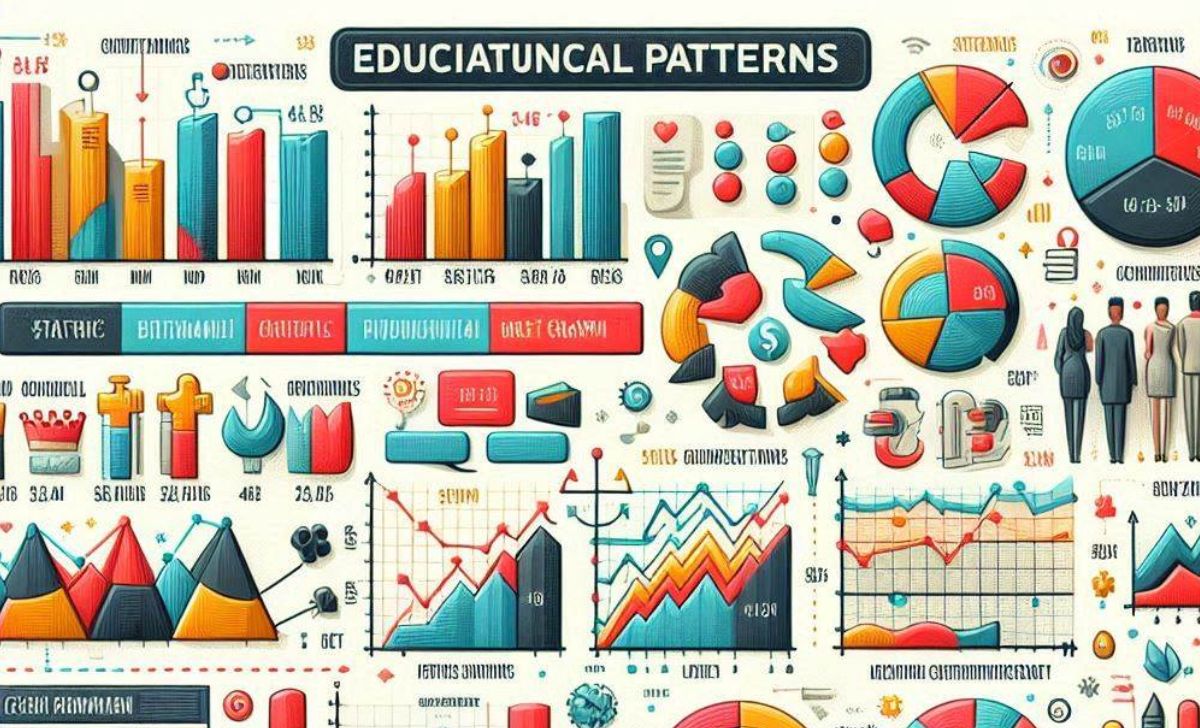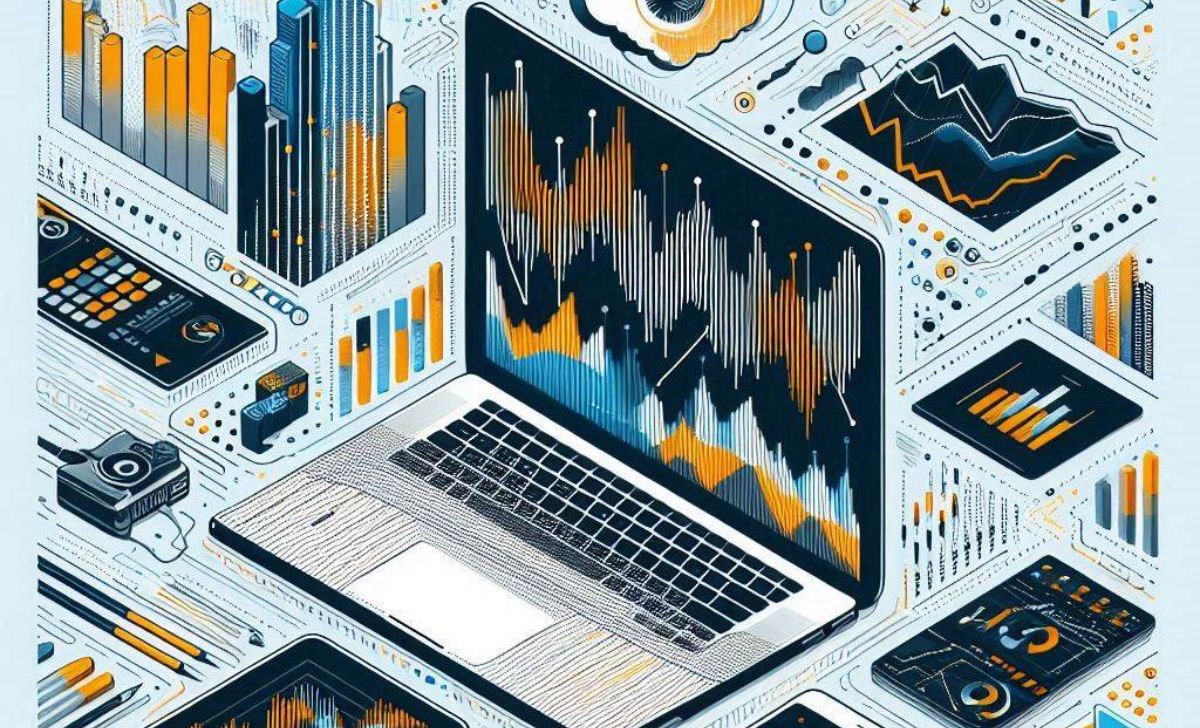Chart patterns play a crucial role in technical analysis by helping traders identify potential trend reversals or continuations. They provide visual signals of market psychology and supply-demand dynamics, allowing traders to anticipate price movements and make better-informed trading decisions. Using chart patterns improves timing for entries and exits, enhances risk management, and supports strategy development.
Chart patterns are essential tools for traders looking to predict market movements with greater accuracy. Mastering these patterns on the XM platform can help you spot key trading opportunities and improve your decision-making. In this article, we’ll explore the most important chart patterns every trader should know to boost their trading success on XM.
Chart Patterns in Trading: The Foundation of Price Action Analysis

What Are Chart Patterns?
Chart patterns are formations created by price movements that form recognizable shapes such as triangles, head and shoulders, and flags. These visual structures are essential tools in technical analysis, enabling traders to anticipate potential future movements by interpreting recurring price behaviors.
How Do Chart Patterns Work?
Chart patterns reflect accumulation, distribution, or market indecision. For example, a bull flag occurs when price consolidates downward after a sharp upward move, suggesting a continuation of the bullish trend. Traders use breakouts or breakdowns from these patterns as confirmation for entries and exits. Volume analysis is often applied to validate these breakouts—rising volume during a breakout can confirm genuine buying or selling interest.
What Do Chart Patterns Reveal About Market Psychology?
Each chart pattern corresponds to a specific behavioral cycle:
- Head and Shoulders: Buying pressure fades as sellers take control.
- Double Top: Buyers fail twice to break resistance.
- Triangle Patterns: Show tightening volatility before explosive moves.
Understanding these behaviors helps traders interpret the emotional sentiment of the market.
Why Are Chart Patterns Important in Technical Analysis?
Unlike indicators that lag price action, chart patterns provide early insights and offer:
- Clarity in trend continuation or reversal
- Defined entry, stop-loss, and target points
- Visual structure usable across timeframes and asset classes
About Us: At XM, we believe that mastering chart patterns is a key skill for traders who want to navigate the markets effectively. Our educational resources and trading tools are designed to help you recognize these patterns with confidence and apply them within a comprehensive strategy.
Types of Chart Patterns and Their Strategic Use

What Are the Main Categories of Chart Patterns?
Chart patterns fall into three categories:
Continuation Patterns
These suggest that the current trend is likely to continue after a short pause:
- Flags: Parallel channels against the trend
- Pennants: Small symmetrical triangles
- Ascending/Descending Triangles: Indicate pressure buildup and likely breakout
Reversal Patterns
These indicate a possible trend change:
-
Head and Shoulders / Inverse: Signify trend exhaustion
-
Double Top/Bottom: Retesting key levels unsuccessfully
-
Wedges: Imply momentum weakening before reversal; when combined with Fibonacci retracement levels, they help pinpoint potential reversal zones with greater accuracy
Bilateral Patterns
These are neutral and depend on breakout direction:
- Symmetrical Triangles
- Rectangles: Horizontal consolidation zones
Triangle Patterns: A Closer Look
What Are the Types of Triangle Patterns?
- Ascending Triangle: Bullish structure with rising support
- Descending Triangle: Bearish bias with declining highs
- Symmetrical Triangle: Neutral until breakout confirms direction
How to Trade Triangle Breakouts
- Entry: After breakout with confirmation
- Stop-Loss: Outside the triangle’s opposite boundary
- Target: Project width of triangle from breakout point
Real vs. False Chart Patterns
Valid patterns:
- Have clean structure and context
- Are backed by volume or momentum confirmation
False patterns:
- Appear during illiquid times
- Lack symmetry or context
- Trigger fake breakouts without follow-through
Chart Patterns in Forex: Application in a Volatile Market

Are Forex Patterns Different from Stock Market Patterns?
Yes, due to decentralization and less reliable volume:
- Rely more on price action
- Interpret via candlestick behavior and liquidity zones
What Are the Most Reliable Forex Chart Patterns?
These frequently appear in major currency pairs:
- Head and Shoulders
- Double Top/Bottom
- Bullish/Bearish Flags
- Triangles
Their repetition stems from consistent liquidity behavior in FX markets.
What Are the Best Timeframes for Forex Chart Patterns?
- H1–H4: Balance between speed and clarity
- D1: High accuracy but slower signals
- M15 or lower: Best for scalpers; require quick reactions
Should You Combine Chart Patterns with Indicators?
Yes, using confluence improves probability:
- Triangle + MACD crossover
- Double Bottom + RSI divergence
- Head and Shoulders + Stochastic signal
This combination filters out false patterns and improves timing.
Mastering Chart Pattern Strategy: Analysis, Execution, and Practice

How to Analyze Chart Patterns Effectively?
Identify the prevailing trend
Confirm the pattern structure
Validate with volume or momentum
Set entry, stop-loss, and take-profit levels
Backtest and adjust based on historical setups
Tools for Pattern Recognition and Practice
- TradingView: Drawing tools, custom indicators, replay mode
- MetaTrader 4/5: Volume overlays and manual analysis
- ChartPattern.com: Research and statistics from Bulkowski
- Pattern Journal: Record screenshots and notes to refine skills
High-Probability and Beginner-Friendly Patterns
Most Reliable Patterns
- Head and Shoulders
- Double Bottom
- Flags
- Cup and Handle
Patterns Ideal for Beginners
- Double Top/Bottom: Easy structure
- Triangle Patterns: Common and repeatable
- Rectangles: Clear consolidation zones
How to Integrate Patterns Into Your Strategy?
- Use pattern structure to set risk/reward ratios
- Combine with MACD or RSI for added confirmation
- Trade breakouts using pending orders just beyond structure
Example Trade Setup Using a Flag Pattern
- Entry: Break above upper flag trendline
- Stop-Loss: Below recent swing low
- Target: Length of the flagpole added to breakout
Common Mistakes and How to Avoid Them in Chart Pattern Trading

What Are the Most Frequent Errors?
- Entering too early before confirmation
- Ignoring the market context
- Overtrading weak or unclear patterns
- Neglecting stop-loss placement
Is Relying Solely on Patterns Dangerous?
Yes. Patterns are guides, not guarantees. Always consider:
- Economic events
- Overall trend context
- Volume conditions and liquidity
How to Avoid Emotional Trading?
- Predefine your trade plan
- Use alerts instead of monitoring obsessively
- Stick to rules, not gut feelings
When Should You Avoid Chart Pattern Trades?
- During high-impact news releases (e.g., NFP, CPI)
- When volume is thin or inconsistent
- If the pattern forms without clear structure
Chart patterns are powerful visual tools that reflect market sentiment and psychology. They help traders identify high-probability setups, manage risk, and plan entries and exits systematically. In Forex, where volatility and liquidity fluctuate rapidly, mastering chart patterns offers structure and discipline.
To succeed, combine chart pattern recognition with solid risk management, confluence with indicators, and consistent backtesting. The more you practice with real and historical charts, the more accurate and confident your learn trading will become.

Darius Elvon is a financial content strategist and editor with a strong focus on clarity and accuracy. He crafts easy-to-follow XM articles, covering promotions, trading tools, and platform updates to enhance user engagement. Email: [email protected]

 Tiếng Việt
Tiếng Việt